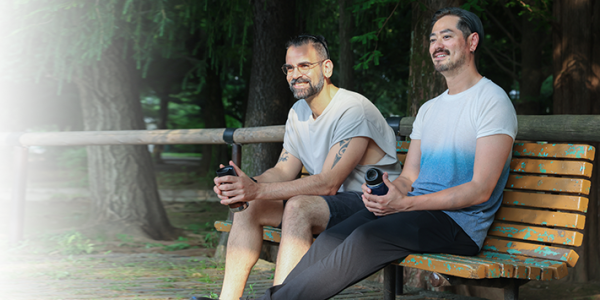
Testicular cancer. Those are two words men don’t want to hear, especially from their doctor. Fortunately, testicular cancer is not that common in the general male population. Each year, 9,760 new cases of testicular cancer are diagnosed, and 500 men die of the disease. The American Cancer Society estimates that one man in 250 will develop the disease in his lifetime, a much lower figure than for prostate cancer (one in eight) or colorectal cancer (one in 23). Because testicular cancer can be treated successfully, the risk of dying – one in 5,000 – is quite low.
Largely a disease of young and middle-aged men, testicular cancer is the most common cancer in males aged 15-34. Figure skating champion Scott Hamilton was only 29 when he was diagnosed. Comedian and talk show host Tom Green, who made a much-praised MTV special about his treatment, was also only 29. Lance Armstrong survived advanced (stage 3) testicular cancer that was diagnosed when he was just 25. However, while the average age of diagnosis is 33, 6% of cases occur in children and teens and 8% in men older than 55.
Signs and Symptoms of Testicular Cancer
Testicular cancer, which usually occurs in just one of the testicles, doesn’t always cause noticeable symptoms. Moreover, many of the symptoms listed below could have a different cause, from injury to infection. Any male experiencing ANY of these symptoms should see a doctor without delay:
- A lump or swelling in either testicle – this is often the first symptom
- A feeling of heaviness or a dull ache in the lower belly or scrotum
- Pain or discomfort in a testicle or the scrotum
- Enlargement and/or tenderness of breast tissue
- Early onset of puberty (before age 9) – some tumors can make androgens (male sex hormones)
- Sudden buildup of fluid in the scrotum
Diagnosing Testicular Cancer
The first step of diagnosis is a manual exam, which is usually part of a routine checkup. Some doctors recommend that all men examine their testicles monthly after puberty. Learn how to do a self-exam here.
In addition to palpating your testicles for lumps, the doctor will examine your belly, lymph nodes, and other parts of your body to determine if the cancer may have spread. If your regular doctor performs this initial exam and suspects testicular cancer, you will likely be referred to a urologist. This specialist will then order further tests:
- An ultrasound can help determine whether a mass is a benign condition or a potentially malignant solid tumor
- Blood tests for tumor markers, substances that indicate the presence of cancer in tissue or body fluids, help determine the type of tumor and how much cancer may be present
- Additional imaging tests, such as a chest X-ray, PET scan, bone scan, or MRI may be performed to learn whether and where the cancer may have spread
Treatment of Testicular Cancer
In addition to the urologist, a testicular cancer patient’s treatment team may include a medical oncologist and/or a radiation oncologist. Treatment for testicular cancer depends on both the type and stage of the cancer. One or more of these modalities may be used:
- Surgery consists of a radical inguinal orchiectomy -- total removal of the testicle and spermatic cord, which contains part of the vas deferens and blood and lymph vessels that could facilitate the spread of cancer to other parts of the body. Lymph nodes may also need to be removed.
- Radiation therapy is mainly used for seminoma, sometimes after an orchiectomy to kill any possible cancer cells in the lymph nodes
- Chemotherapy is only used once testicular cancer has spread outside the testicle. For best results, medical oncologists tend to use a cocktail of two or more chemotherapy drugs.
- Stem cell transplant may be prescribed if higher doses of chemo are indicated, as with recurrent tumors. Strong chemo severely damages the blood marrow, where blood cells are made. In a stem cell transplant, blood-forming stem cells are collected from the patient’s own bloodstream, frozen, and reserved for later use. The patient then gets high doses of chemo. After chemo, the patient gets his stem cells back again via blood transfusion. The cells migrate to the bone marrow and start making new blood cells.
Risk Factors for Testicular Cancer
The causes of testicular cancer are still being investigated, although certain genes appear to be involved. No lifestyle-related risk factors have been identified yet, but there are certain known risk factors:
- An undescended testicle (cryptorchidism)
- Abnormal development of the testicles
- Personal history of testicular cancer
- Family history of testicular cancer (especially in a father or brother)
- Having been diagnosed with HIV or AIDS
- Being of Caucasian descent – in the US, white men are four to five times more likely to have testicular cancer than black men and three times more likely than Asian men
This article appeared in the April 2024 edition of the HealthPerks newsletter.

